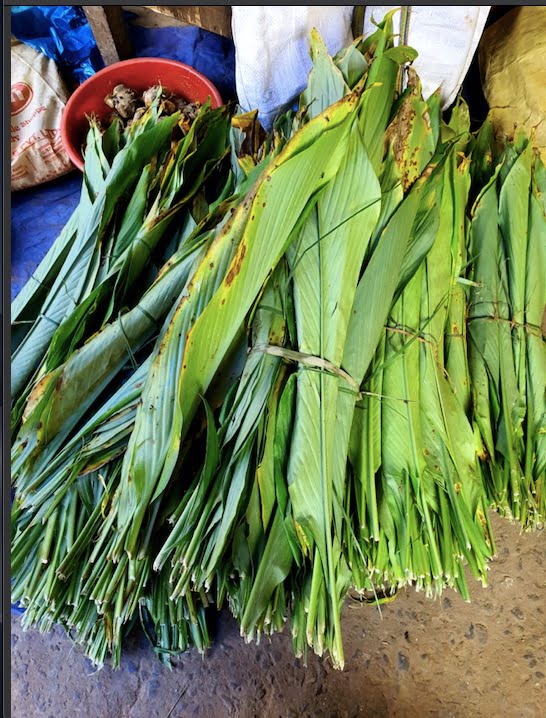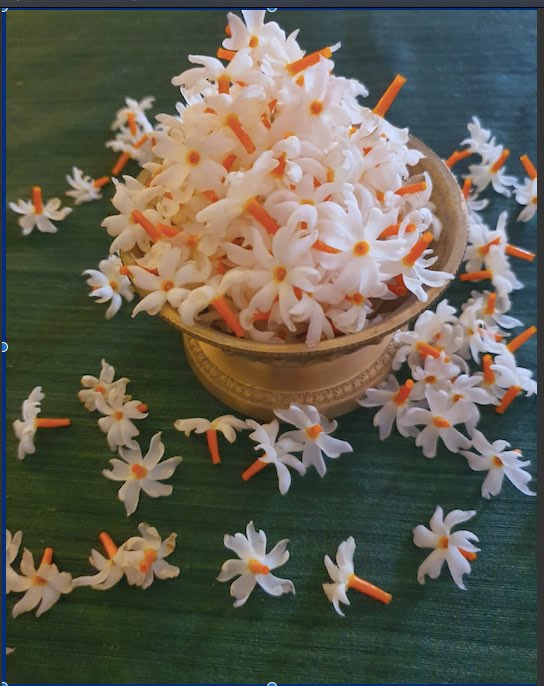In our growing up years, autumn felt like autumn. Mornings would be fragrant with the perfumes of ‘gangashiuli’ Nyctanthes arbor-tristis and ‘chhatiana’ Alstonia scholaris; nights would be cool with a distinct nip in the air, felt clearly, on waking up at pre-dawn hours and going out to sail boats in tanks and ponds on Kartika Purnima. Soon after, winter would descend, bringing with it shawls, sweaters, hot soups, sniffling noses and hot water gargles. And, of course, the festival of ‘Prathamashtami’, eight days after Kartika Purnima. To me, the change of season was the shift in fragrance in the air – from the sweet smell of ‘gangashiuli’ to the raw flavour of ‘haladi’ Curcuma longa.
 Celebrating the first-born, Margashira-Krishnapaksha-Ashtami or Prathamashtami, is one of the most important festivals in the Odia calendar. Every Odia household indulges and pampers the oldest child (podhuan) in the family on this day, through prayers, ceremonial rituals and gifts. Most often, the new clothes donned by the child are a gift from the maternal grandparents. Special prayers are offered seeking long life and prosperity for the ‘podhuan’. The specialty of the day is ‘enduri pitha’, where ground rice and urad dal paste is filled with caramelized coconut scrapes, wrapped within a leaf of turmeric (haladi), and steamed, resulting in one of the most delicious and flavoursome delicacies of Odisha.
Celebrating the first-born, Margashira-Krishnapaksha-Ashtami or Prathamashtami, is one of the most important festivals in the Odia calendar. Every Odia household indulges and pampers the oldest child (podhuan) in the family on this day, through prayers, ceremonial rituals and gifts. Most often, the new clothes donned by the child are a gift from the maternal grandparents. Special prayers are offered seeking long life and prosperity for the ‘podhuan’. The specialty of the day is ‘enduri pitha’, where ground rice and urad dal paste is filled with caramelized coconut scrapes, wrapped within a leaf of turmeric (haladi), and steamed, resulting in one of the most delicious and flavoursome delicacies of Odisha.
As first born, I have been the thoroughly indulged ‘podhuan’, especially since I am also the oldest amongst all my cousins on the maternal side of the family. My brother, a year younger to me, would observe wide-eyed the pampering showered on me, until a bit of indulgence also went his way. My youngest sibling, however, was too small to notice the goings-on, and was therefore ignored!
 The intense earthy aroma of steaming turmeric leaves floating around the house is my most enduring memory of Prathamashtami. It remains my most favourite marker of the special day even until today. As I grew up, I began to understand that festivals and rituals are lessons scripted by our ancestors who were true seers in the way they wove nature into them, and, science into tradition, in order to inculcate healthy habits. Ayurveda postulates that the intake of turmeric leaf extracts at the onset of the cold season, through the healthy technique of steaming, helps in strengthening the immune system. The world is now waking up to the curing and healing properties of turmeric, which has a long history of medicinal use in India, dating back to 4000 years.
The intense earthy aroma of steaming turmeric leaves floating around the house is my most enduring memory of Prathamashtami. It remains my most favourite marker of the special day even until today. As I grew up, I began to understand that festivals and rituals are lessons scripted by our ancestors who were true seers in the way they wove nature into them, and, science into tradition, in order to inculcate healthy habits. Ayurveda postulates that the intake of turmeric leaf extracts at the onset of the cold season, through the healthy technique of steaming, helps in strengthening the immune system. The world is now waking up to the curing and healing properties of turmeric, which has a long history of medicinal use in India, dating back to 4000 years.
I, therefore, follow prescribed food rituals with all sincerity, relishing the flavours of herbs and roots, of leaves and inflorescence. Nature has all the answers in her rhythm and flow, and, it is our duty to tune ourselves to the wisdom of our ancients.
 Today, sadly, there are no defining markers for seasons. In the third week of November, the ‘gangashiuli’ continues to bloom. Turmeric leaves smell bland when crushed and inhaled. The nip in the air is yet to come, a true-blue winter of the past, seems a remote possibility going forward. Climate Change has begun to wreak havoc on all natural cycles and ecosystems. What shouldn’t be is gradually taking over everything that should be.
Today, sadly, there are no defining markers for seasons. In the third week of November, the ‘gangashiuli’ continues to bloom. Turmeric leaves smell bland when crushed and inhaled. The nip in the air is yet to come, a true-blue winter of the past, seems a remote possibility going forward. Climate Change has begun to wreak havoc on all natural cycles and ecosystems. What shouldn’t be is gradually taking over everything that should be.
This morning, I picked a basketful of fallen ‘gangashiuli’ flowers, delighted to touch them, reveling in their pristine beauty, drawing in the intoxicating fragrance. Yet, somewhere, in the recesses of my heart, I know that the presence of these flowers on Prathamashtami is an aberration. I hope that flavours and fragrances rediscover their natural bio-rhythms, and seasons go back to being what they were so that our future generations get to experience them as they truly are. For, without their iconic markers, they are meaningless.
A happy and blessed Prathamashtami!
(The writer is a noted conservationist)


